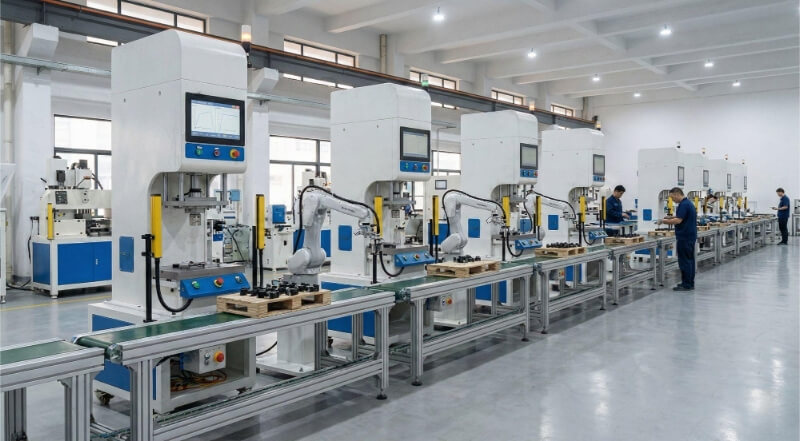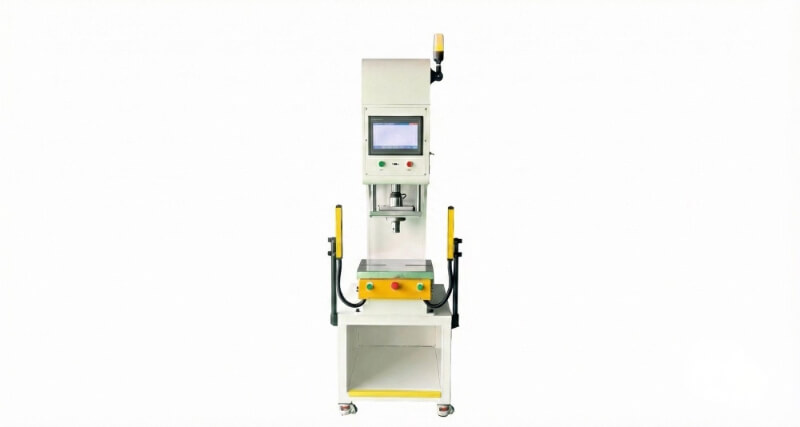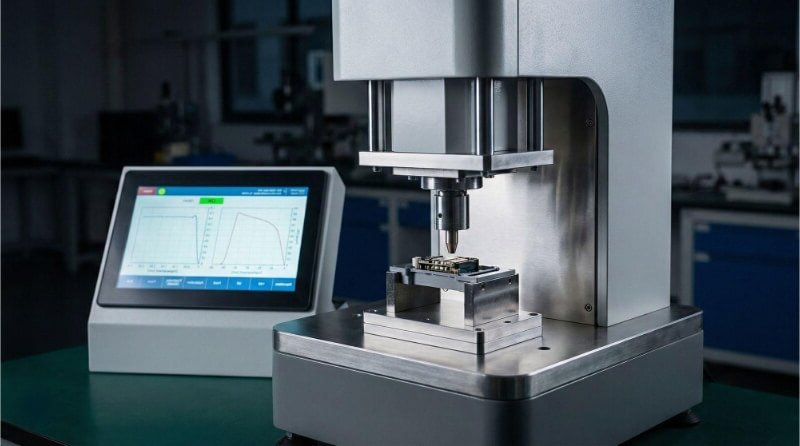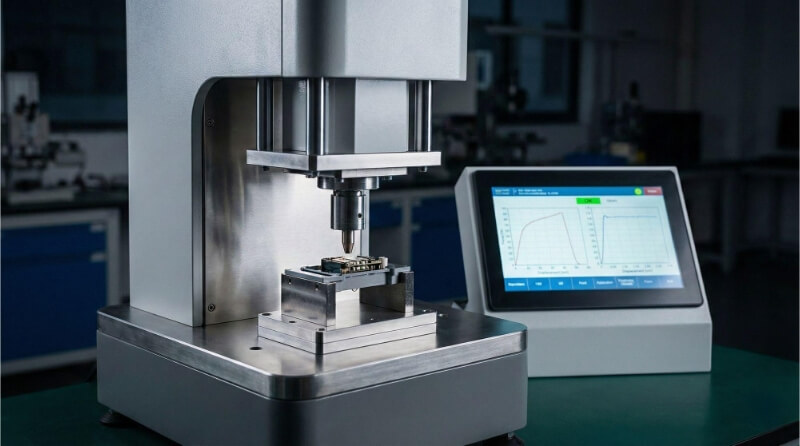Muchas empresas se enfrentan al mismo reto. Necesitan entregar productos acabados con rapidez, pero a menudo no tienen tiempo, trabajadores o equipos para encargarse de todo ellas mismas. La externalización ayuda a resolver este problema. Permite a las empresas centrarse en el diseño, las ventas y el crecimiento, mientras expertos cualificados supervisan el trabajo de producción. Cuando las empresas externalizan el montaje, ahorran tiempo, reducen costes y obtienen una calidad constante en cada pedido.
El montaje de contratos tiene claras ventajas, pero también plantea dudas. Para entenderlo mejor, examinemos cómo funciona y por qué es importante.
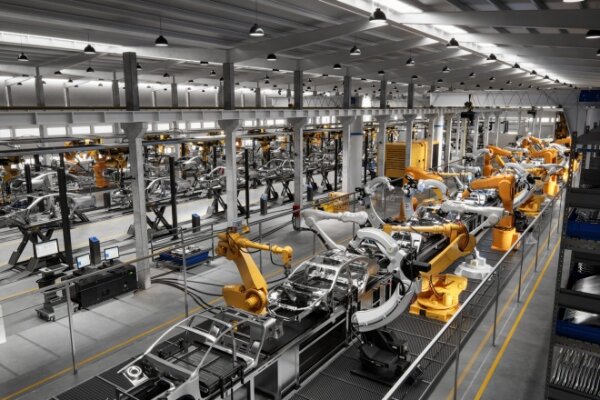
¿Qué es el montaje por contrato?
El ensamblaje por contrato consiste en trabajar con un socio externo para ensamblar piezas, subconjuntos o productos acabados. El cliente puede suministrar los componentes o pedir al proveedor que los busque. A continuación, el proveedor sigue las instrucciones dadas para ensamblar el producto. Este método ayuda a las empresas a controlar costes, reducir riesgos y centrarse en su actividad principal.
La relación cliente-proveedor
El cliente y el proveedor necesitan una comunicación clara y confianza. El cliente establece los requisitos, plazos y normas de calidad. El proveedor se compromete a seguir estas instrucciones y ofrecer resultados coherentes. Ambas partes deben ser sinceras sobre la planificación, el uso de materiales y las fases de producción.
Ámbito de trabajo y responsabilidades
El alcance del trabajo explica lo que hará el proveedor y lo que debe aportar el cliente. Suele incluir el aprovisionamiento de materiales, las fases de montaje, las pruebas, el embalaje y la entrega. El cliente es responsable de proporcionar especificaciones, planos y calendarios precisos. El proveedor debe completar el proceso de montaje para cumplir las normas acordadas.
El proceso de montaje de contratos
El proceso de montaje por encargo sigue una ruta clara que convierte las piezas en bruto en productos acabados. He aquí un sencillo desglose de los pasos.
Diseño inicial y asistencia técnica
El proceso suele comenzar con el apoyo al diseño y la ingeniería. Los proveedores revisan planos, muestras o prototipos. Pueden sugerir ajustes que faciliten la construcción del producto, abaraten costes o acorten el tiempo de producción. Este paso garantiza que el cliente y el proveedor estén de acuerdo en los detalles técnicos antes del montaje.
Aprovisionamiento y adquisición de componentes
Una vez confirmado el diseño, la atención se centra en los materiales. A veces, el cliente suministra todos los componentes. En otros casos, el proveedor los busca y los compra. Se eligen proveedores de confianza que satisfagan tanto las necesidades de calidad como de entrega. El objetivo es tener listas a tiempo las piezas adecuadas.
Configuración de la línea de montaje y flujo de trabajo
Una vez colocados los materiales, el proveedor prepara la cadena de montaje. Para ello, se instalan los puestos de trabajo, las herramientas y los dispositivos necesarios para trabajar con eficacia. Cada tarea se organiza para evitar confusiones. Un flujo de trabajo sencillo mejora la velocidad, reduce los residuos y garantiza resultados uniformes.
Control de calidad y procedimientos de ensayo
Los controles de calidad se realizan en todas las fases. Los proveedores inspeccionan las piezas entrantes, supervisan los pasos durante el montaje y prueban el producto acabado. Las pruebas pueden incluir comprobaciones mecánicas, inspecciones de ajuste o ensayos de rendimiento. Estos controles confirman que el producto cumple las normas del cliente antes de su envasado.
Embalaje y entrega final
El último paso es el envasado y la entrega. Los proveedores empaquetan los productos según las peticiones de los clientes, ya sea para estantes de venta al por menor o para envíos a granel. Un embalaje seguro protege los artículos durante el transporte. A continuación, los productos acabados se entregan al cliente o se envían directamente a los clientes finales, según el acuerdo.
Tipos de servicios de montaje por contrato
Los servicios de montaje por contrato se presentan en diferentes formas para satisfacer las necesidades específicas de las empresas. Estos son los servicios estándar disponibles.
Subconjunto
El subensamblaje consiste en ensamblar unidades más pequeñas que más tarde pasarán a formar parte de un producto mayor. Ayuda a los fabricantes a ahorrar tiempo preparando los componentes de antemano. Este servicio es habitual en las industrias del automóvil, la electrónica y la maquinaria.
Montaje de productos
El montaje de productos implica combinar todas las piezas en un producto acabado. Los proveedores siguen las especificaciones del cliente para garantizar la precisión. Este proceso es útil para empresas que quieren entregar productos listos para usar directamente a los clientes.
Montaje mecánico
El montaje mecánico se centra en las piezas que necesitan sujeción, soldadurao accesorio. A menudo se trata de componentes de metal o plástico que requieren resistencia estructural. Este tipo de servicio es habitual en equipos, electrodomésticos y productos industriales.
Montaje electromecánico
Un conjunto electromecánico combina piezas eléctricas y mecánicas. Algunos ejemplos son los mazos de cables, los paneles de control y los dispositivos electrónicos. Se necesita mano de obra cualificada para garantizar conexiones eléctricas seguras y fiables.
Servicios de envasado
Los servicios de embalaje preparan los productos para su envío, almacenamiento o venta al por menor. Los proveedores pueden utilizar envases protectores, personalizados o de marca en función de las necesidades del cliente. Un buen embalaje evita daños y mejora la experiencia del usuario final.
Servicios de Kitting
Kitting significa agrupar diferentes piezas en un paquete listo para enviar. Se utiliza mucho en el comercio electrónico, los suministros médicos y la fabricación. Al combinar todos los artículos en un kit, las empresas ahorran tiempo de manipulación y reducen los errores.
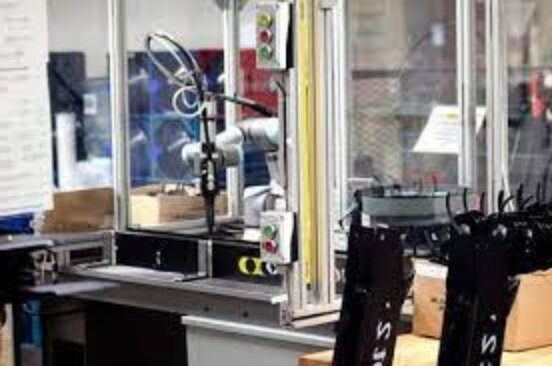
Ventajas del montaje por contrato
El montaje por encargo ayuda a las empresas a simplificar la producción al tiempo que añade valor real. Las ventajas van más allá del ahorro de tiempo. También contribuyen a unas operaciones más sólidas y eficientes.
Ahorro de costes y eficiencia
La externalización del montaje reduce la necesidad de personal, formación y equipos adicionales. Las empresas recortan gastos generales y pagan sólo por los servicios que utilizan. Los proveedores suelen ejecutar procesos racionalizados que reducen los residuos y mejoran la eficiencia.
Acceso a conocimientos especializados
Los proveedores de montaje por contrato aportan equipos cualificados y prácticas probadas. Saben cómo trabajar con distintos materiales, piezas y métodos de montaje. Esta experiencia garantiza resultados fiables y menos errores durante la producción.
Escalabilidad y flexibilidad
Las empresas pueden aumentar o reducir la producción en función de la demanda. Los proveedores pueden modificar rápidamente su capacidad para adaptarse al tamaño de los pedidos sin retrasos. Esta flexibilidad facilita la gestión de picos estacionales o cambios repentinos en el mercado.
Mayor rapidez de comercialización
La externalización acelera los ciclos de producción. Los proveedores ya cuentan con trabajadores formados y el equipo adecuado, lo que reduce los plazos de entrega y ayuda a las empresas a entregar los productos a los clientes con mayor rapidez.
Retos y riesgos del montaje por encargo
El montaje por encargo ofrece muchas ventajas, pero también plantea retos que las empresas deben gestionar. Conocer estos riesgos ayuda a evitar retrasos y costes adicionales.
Garantía de calidad
Mantener una calidad constante puede ser más difícil cuando la producción se realiza fuera de la empresa. Aunque los proveedores sigan las instrucciones, pueden producirse errores. Las inspecciones y auditorías periódicas son fundamentales para garantizar que los productos cumplen las normas.
Dependencia de la cadena de suministro
El montaje subcontratado depende a menudo de una amplia cadena de suministro. Los retrasos en las entregas o la escasez de material pueden ralentizar la producción. Trabajar con proveedores de confianza ayuda a reducir estos riesgos.
Problemas de comunicación y coordinación
El montaje de contratos requiere una fuerte coordinación entre el cliente y el proveedor. Una mala comunicación puede provocar errores en las especificaciones, los plazos o las entregas. Una documentación clara y actualizaciones periódicas mantienen alineadas a ambas partes.
Protección de la propiedad intelectual
Compartir diseños y detalles técnicos con socios externos conlleva cierto riesgo. Las empresas deben proteger la información sensible con contratos, acuerdos de confidencialidad y sistemas de datos seguros. Estas medidas reducen las posibilidades de uso indebido.
Montaje por contrato frente a fabricación por contrato
Montaje por contrato y fabricación por encargo están estrechamente relacionadas. Ambas permiten a las empresas externalizar el trabajo de producción, pero difieren en su alcance y nivel de apoyo.
Principales similitudes
Ambos modelos recurren a proveedores externos para gestionar partes del proceso de producción. Reducen los gastos generales, ahorran tiempo y dan acceso a mano de obra cualificada. Cada uno de ellos permite a las empresas centrarse en el diseño, las ventas y el crecimiento mientras confían en un socio para las tareas de producción.
Diferencias importantes
El montaje por contrato se centra en ensamblar las piezas suministradas o los componentes de origen. El proveedor sólo se encarga de la fase de montaje.
La fabricación por contrato, en cambio, abarca todo el proceso. Puede incluir el diseño, el aprovisionamiento de materiales, la producción, el montaje e incluso el envío, lo que la convierte en una solución integral más amplia.
¿Cuándo elegir uno u otro?
Las empresas que ya disponen de piezas o desean un mayor control sobre el aprovisionamiento suelen optar por el montaje por contrato.
Las empresas que necesitan un apoyo completo a la producción, desde las materias primas hasta los productos acabados, se benefician más de la fabricación por contrato. La elección depende de cuánto control e implicación quiera la empresa en la cadena de suministro.
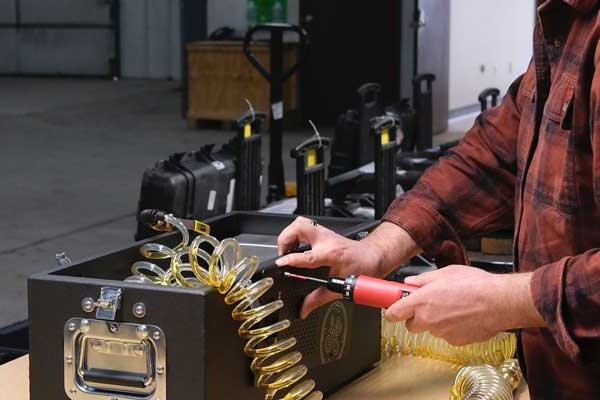
¿Qué industrias recurren al montaje por encargo?
El ensamblaje por contrato es útil para muchas industrias. Cualquier empresa que necesite una producción fiable y eficiente puede beneficiarse de la subcontratación de tareas de montaje.
Electrónica
Las empresas de electrónica recurren a menudo al ensamblaje por contrato para placas de circuitos, mazos de cables y dispositivos de consumo. Los técnicos cualificados garantizan que las conexiones sean precisas y el rendimiento uniforme en todas las unidades.
Automotor
La industria del automóvil recurre al montaje por contrato para subconjuntos, salpicaderos, sistemas de cableado y pequeñas piezas mecánicas. La subcontratación ayuda a satisfacer altos volúmenes de producción manteniendo estrictas normas de calidad.
Dispositivos médicos
Las empresas de productos sanitarios recurren al montaje por contrato de herramientas de diagnóstico, instrumentos y dispositivos portátiles. La precisión y el cumplimiento de la normativa son vitales, por lo que los proveedores experimentados son esenciales para el proceso.
Equipamiento comercial
Los fabricantes de equipos industriales y comerciales recurren a la subcontratación para el montaje de maquinaria, equipos de seguridad vial y herramientas especializadas. Los proveedores ayudan a racionalizar la producción y acortar los plazos de entrega para que los equipos lleguen a tiempo a los clientes.
Elegir al socio adecuado para el montaje por contrato
Elegir al socio adecuado es fundamental. Un proveedor sólido garantiza calidad, rapidez y una colaboración fluida.
Evaluación de capacidades y conocimientos
Empiece por comprobar las aptitudes y experiencia del proveedor. Revise los tipos de productos que han montado y la complejidad de proyectos anteriores. Pregunte por su mano de obra, equipos y flujo de trabajo. Un socio capaz debe gestionar distintos materiales, técnicas y volúmenes de producción.
Comprobación de certificaciones y normas
Las certificaciones demuestran que un proveedor sigue prácticas de calidad y seguridad reconocidas. La norma ISO 9001 es habitual para la gestión de la calidad, mientras que la ISO 13485 se aplica a los productos sanitarios. Según el sector, pueden ser necesarias otras normas, como RoHS para la electrónica o AS9100 para piezas aeroespaciales.
Ubicación y logística
La ubicación del proveedor afecta a los costes, los plazos de entrega y la comunicación. Un socio local puede reducir los gastos de envío y acelerar la entrega. Los socios extranjeros pueden ofrecer costes de mano de obra más bajos o una experiencia única. Tenga en cuenta la logística, las opciones de envío y riesgos como los retrasos aduaneros.
Conclusión
El montaje por contrato permite a las empresas subcontratar el montaje de piezas o productos a proveedores cualificados. Ahorra tiempo, reduce costes y da acceso a conocimientos especializados. Las empresas pueden ampliar la producción, mejorar la eficiencia y lanzar productos al mercado más rápidamente, manteniendo la calidad.
¿Está listo para racionalizar su producción? Háblenos hoy mismo de su proyecto y obtenga un presupuesto gratuito. Construyamos juntos su producto.
Preguntas frecuentes
¿Cómo puedo asegurarme de que el diseño de mi producto es adecuado para el montaje por encargo?
Póngase en contacto con posibles socios de ensamblaje en las primeras fases del proceso de diseño. Pueden proporcionar un análisis de diseño para la fabricación (DFM) para identificar posibles problemas de producción, sugerir modificaciones para un montaje más fácil y rentable, y garantizar que su diseño está optimizado para sus procesos.
¿Cuáles son los contratos y acuerdos habituales?
La relación se rige por un contrato detallado que describe el alcance del trabajo, las normas de calidad, los precios, las condiciones de pago, la responsabilidad, la titularidad de la propiedad intelectual, la confidencialidad (NDA) y las cláusulas de rescisión. Es fundamental que un asesor jurídico revise estos acuerdos.
¿Quién es responsable si un componente suministrado por mi empresa es defectuoso?
En un modelo de montaje por kits, en el que el cliente suministra todos los componentes, suele ser responsable de que las piezas no presenten defectos. El montador es responsable de notificar los defectos y montar los productos correctamente. La responsabilidad se define en el acuerdo de servicio.
¿Puede un montador subcontratado ayudar con el embalaje y el envío?
Sí, muchos ensambladores subcontratados ofrecen servicios de valor añadido, incluido el embalaje personalizado, la marca, el kitting, la gestión logística y el envío a distribuidores o directamente a los clientes finales, proporcionando una solución completa de principio a fin.
Hola, soy Kevin Lee

Durante los últimos 10 años, he estado inmerso en diversas formas de fabricación de chapa metálica, compartiendo aquí ideas interesantes de mis experiencias en diversos talleres.
Póngase en contacto

Kevin Lee
Tengo más de diez años de experiencia profesional en la fabricación de chapas metálicas, especializada en corte por láser, plegado, soldadura y técnicas de tratamiento de superficies. Como Director Técnico de Shengen, me comprometo a resolver complejos retos de fabricación y a impulsar la innovación y la calidad en cada proyecto.

